The electronic ignition system controls fuel combustion
by providing a spark to ignite the compressed air/fuel mixture at the correct
time. To provide optimum engine performance, fuel economy, and control
of exhaust emissions, the powertrain control module (PCM) controls the spark
advance of the ignition system.
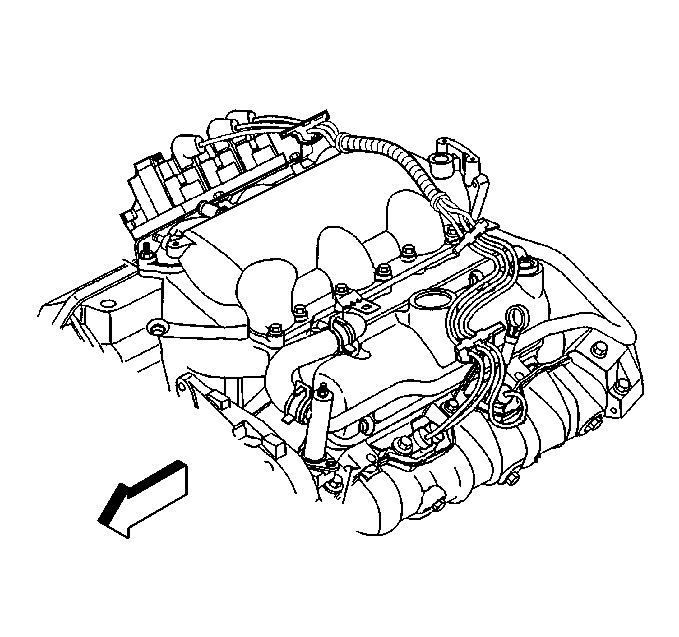
Electronic ignition has the following advantages over a mechanical
distributor system:
| • | Remote mounting capability |
| • | No mechanical load on the engine |
| • | More coil cool down time between firing events |
| • | Elimination of mechanical timing adjustments |
| • | Increased available ignition coil saturation time |
The electronic ignition system does not use the conventional
distributor and coil. The ignition system consists of 3 ignition coils,
an ignition control module, a camshaft position sensor, 7X crankshaft
position sensor in the block, a 24X crankshaft position sensor behind
the crankshaft balancer, related connecting wires, and the ignition
control (IC) and fuel metering portion of the PCM.
Conventional ignition coils have one end of the secondary winding connected
to the engine ground. In this ignition system, neither end of the secondary
winding is grounded. Instead, each end of a coil's
secondary winding is attached to a spark plug. Each
cylinder is paired with the cylinder that is opposite
it . These two plugs are on companion cylinders,
i.e., on top dead center at the same time.
When the coil discharges, both plugs fire at the same time to complete
the series circuit. The cylinder on compression is said to be the event cylinder
and the one on exhaust is the waste cylinder. The
cylinder on the exhaust stroke requires very little
of the available energy to fire the spark plug.
The remaining energy will be used as required by the cylinder
on the compression stroke. The same process is repeated
when the cylinders reverse roles. This method of ignition
is called a waste spark ignition system.
Since the polarity of the ignition coil primary and secondary windings
is fixed, one spark plug always fires with normal polarity and its companion
plug fires with reverse polarity. This differs from
a conventional ignition system that fires all the
plugs with the same polarity. Because the ignition
coil requires approximately 30 percent more voltage to
fire a spark plug with reverse polarity, the ignition coil
design is improved, with saturation time and primary
current flow increased. This redesign of the system
allows higher secondary voltage to be available from
the ignition coils, more than 40 kilovolts
(40,000 volts) at any engine RPM. The voltage required
by each spark plug is determined by the polarity and
the cylinder pressure. The cylinder on compression
requires more voltage to fire the spark plug than
the one on exhaust.
It is possible for one spark plug to fire even though a plug wire from
the same coil may be disconnected from its companion plug. The disconnected
plug wire acts as one plate of a capacitor, with
the engine being the other plate. These two capacitor
plates are charged as a spark jumps across the
gap of the connected spark plug. The plates are then discharged
as the secondary energy is dissipated in an oscillating
current across the gap of the spark plug that
is still connected. Secondary voltage requirements are
very high with an open spark plug or spark plug wire.
The ignition coil has enough reserve energy to
fire the plug that is still connected at idle, but
the coil may not fire the spark plug under high
engine load. A more noticeable misfire may be evident under load,
both spark plugs may then be misfiring.
24X and 7X Crankshaft Position Sensors/Harmonic Balancer Interrupter
Ring
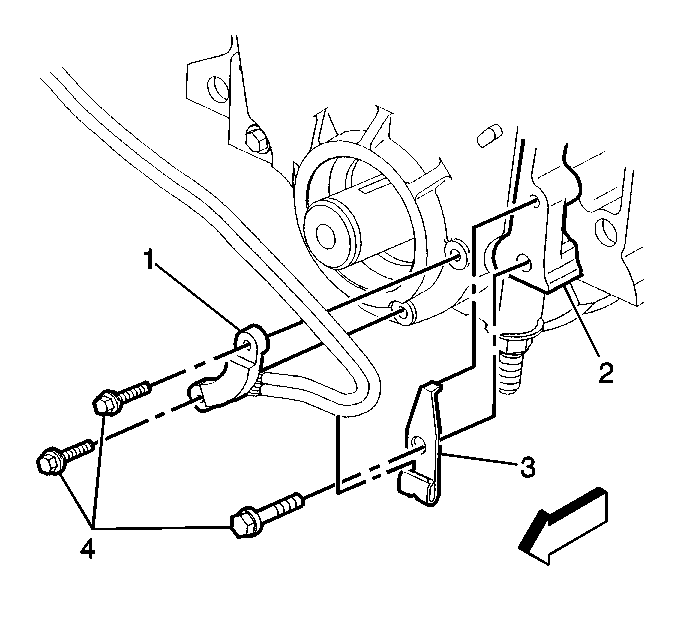
The 24X crankshaft position
sensor (1), secured in a mounting bracket (3) and bolted to the front side
of the engine timing chain cover (2), is partially behind the crankshaft
balancer.
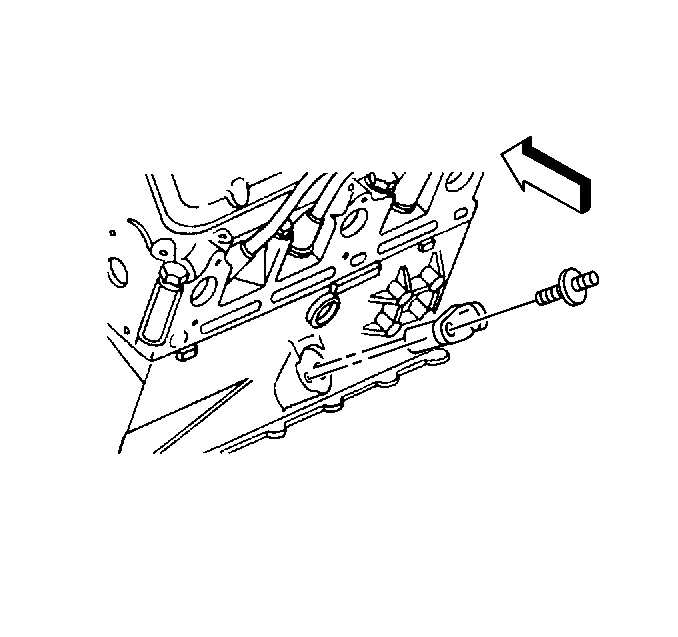
The 7X crankshaft position sensor uses a two wire connector at the
sensor and a three-way connector at the ignition control module.
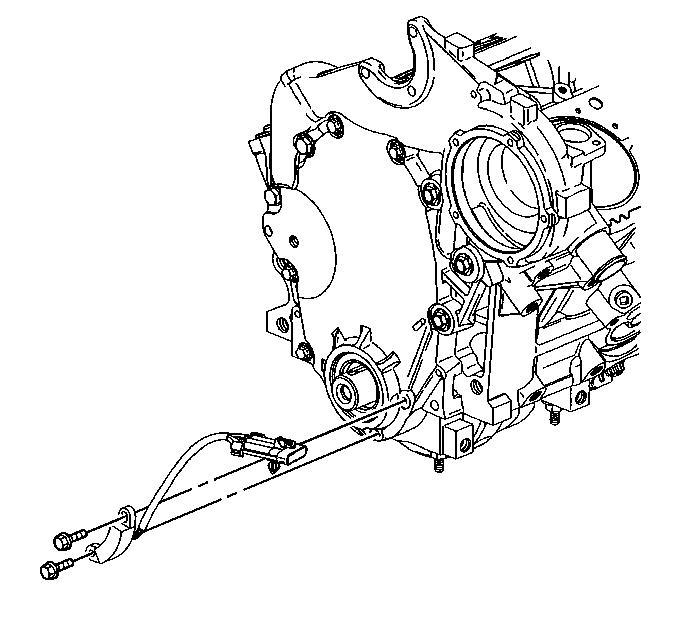
The 24X crankshaft position (CKP) sensor contains a Hall-Effect switch.
The magnet and Hall-Effect switch are separated by an air gap. A Hall-Effect
switch reacts like a solid state switch,
grounding a low current signal voltage when a magnetic field is
present. When the magnetic field is shielded from the switch by a piece
of steel placed in the air gap between the magnet and the switch,
the signal voltage is not grounded. If the piece of steel, called an interrupter,
is repeatedly moved in and out of the air gap, the
signal voltage will appear to go ON-OFF, ON-OFF, ON-OFF. Compared
to a conventional mechanical distributor, this on-off signal is similar
to the signal that a set of breaker points in the distributor would
generate as the distributor shaft turned and the points opened and closed.
In the case of the electronic ignition system, the piece of steel is
a concentric interrupter ring mounted to the rear of the crankshaft balancer.
The interrupter ring has blades and windows that, with crankshaft rotation,
either block the magnetic field or allow it to reach the Hall-Effect switch.
The Hall-Effect switch is called a 24X CKP sensor, because the
interrupter ring has 24 evenly spaced blades and windows. The 24X
CKP sensor produces 24 on-off pulses per crankshaft revolution.
The interrupter ring is a special wheel cast on the crankshaft that
has seven machined slots, six of which are equally spaced 60 degrees apart.
The seventh slot is spaced 10 degrees from one of the other slots. As the
interrupter ring rotates with the crankshaft, the slots change the magnetic
field. This will cause the 7X to ground the 3X signal voltage that is
supplied by the ignition control module. The ignition control module
interprets the 7X on-off signals as an indication of crankshaft position.
The ignition control module must have the 7X signal to fire the correct
ignition coil.
The 7X interrupter ring and Hall-Effect switch react similarly. The
24X signal is used for better resolution at a calibrated RPM.
Camshaft Position (CMP) Sensor
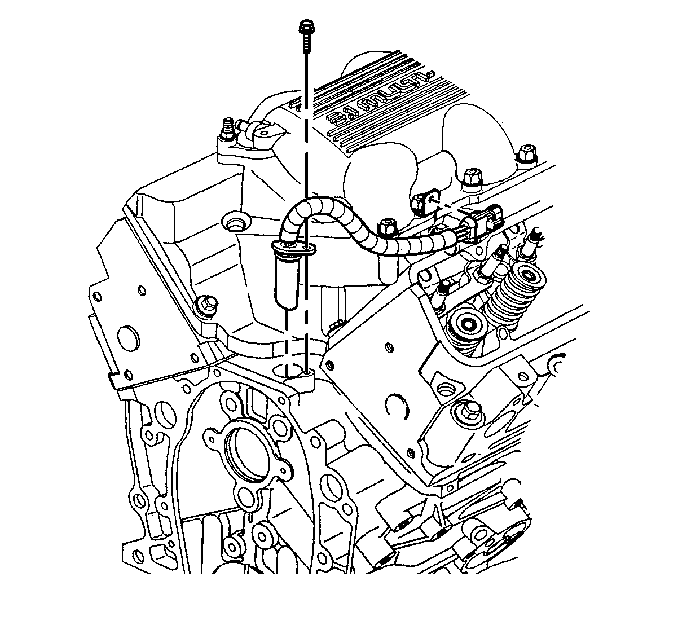
The camshaft position
sensor is located on the timing cover behind the water pump near the camshaft
sprocket. As the camshaft sprocket turns, a magnet in it activates the Hall-Effect
switch in the camshaft position sensor. When the Hall-Effect switch
is activated, it grounds the signal line to the PCM, pulling
the camshaft position sensor signal circuit's applied voltage low. This
is interpreted as a CAM signal.
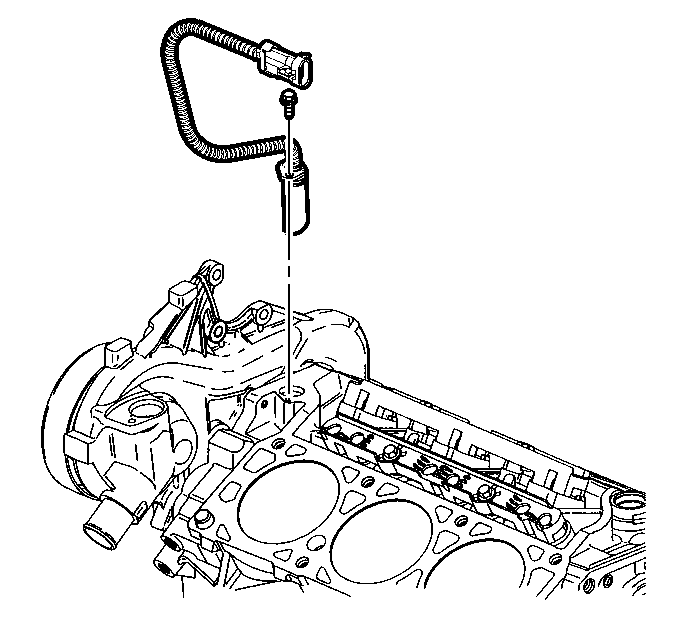
The CAM signal is created as piston #1 is on the intake stroke. If
the correct CAM signal is not received by the PCM, DTC P0341 will
be set.
Ignition Coils
Three twin-tower ignition coils are individually mounted to the ignition
control module. Each coil provides spark for 2 plugs
simultaneously, waste spark distribution.
Each coil is serviced separately. Two terminals connect each
coil pack to the module. Each coil is provided
a fused ignition feed. The other terminal
at each coil is individually connected to the module,
which will energize one coil at a time
by completing and interrupting the primary
circuit ground path to each coil at the proper time.
Ignition Control (IC) Module
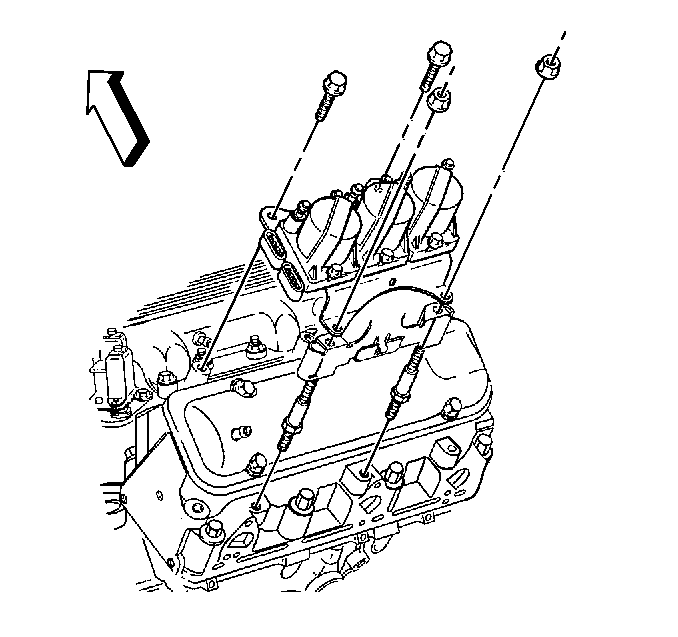
The ignition control
(IC) module performs the following functions:
| • | It determines the correct ignition coil firing sequence, based
on 7X pulses. This coil sequencing occurs at start-up. After the engine is
running, the module determines the sequence,
and continues triggering the ignition
coils in proper sequence. |
| • | It sends the 3X crankshaft reference signal to the PCM. The
PCM determines engine RPM from this signal. this signal is also
used by the PCM to determine crankshaft speed
for ignition control (IC) spark advance
calculations. |
The 3X reference signal sent to the PCM by the IC module is an ON,
OFF pulse occurring 3 times per crankshaft revolution.
Circuits Affecting Ignition Control
In order to properly control ignition timing, the PCM relies on the
following information:
| • | Engine load, manifold pressure or vacuum |
The Ignition Control (IC) system consists of the following components:
| • | Ignition control module |
| • | 7X crankshaft position sensor |
| • | 24X crankshaft position sensor |
| • | Powertrain control module |
The electronic IC module connector terminals are identified as shown
in the Electronic Ignition System graphic. These circuits
perform the following functions:
| • | 3X reference high--The 7X crankshaft position sensor sends
a signal to the electronic ignition control module which generates a reference
pulse that is sent to the PCM. The PCM uses
this signal to calculate crankshaft position
and engine speed, also used to trigger the fuel injectors. |
| • | 3X reference low--This wire is grounded through the ICM
and assures the ground circuit has no voltage drop between the ICM and
the PCM. |
| • | Ignition control bypass--During initial cranking, the PCM
will look for synchronizing pulses from the camshaft position sensor and
the 7X crankshaft position sensor. The pulses
indicate the position of the #1 piston
and the #1 intake valve. Five volts is applied to the bypass
circuit at precisely the same time these
signals are received by the PCM. This
generally occurs within one or two revolutions of the crankshaft.
An open or grounded bypass circuit will
set a DTC P1351 and the engine
will run at base ignition timing. A small amount of spark
advance is built into the ignition control
module to enhance performance. |
| • | Ignition control (IC)--The PCM uses this circuit to trigger
the electronic ignition control module. The PCM uses the crankshaft reference
signal to calculate the amount of spark
advance needed. |
| • | 24X reference signal--The 24X crankshaft position sensor
increases idle quality and low speed driveability by providing better resolution
at a calibrated RPM. |
Ignition System
There are important considerations to point out when servicing the
ignition system. The following Noteworthy Information will list some of these,
to help the technician in servicing the
ignition system.
| • | The ignition coils secondary voltage output capabilities are
very high - more than 40,000 volts. Avoid body contact with ignition
high voltage secondary components when
the engine is running, or personal injury
may result. |
| • | The 7X crankshaft position sensor is the most critical part of
the ignition system. If the sensor is damaged so that pulses are not generated,
the engine will not start. |
| • | Crankshaft position sensor clearance is very important. The sensor
must not contact the rotating interrupter ring at any time, or sensor damage
will result. If the balancer interrupter
ring is bent, the interrupter ring blades
will destroy the sensor. |
| • | Ignition timing is not adjustable. There are no timing marks
on the crankshaft balancer or timing chain cover. |
| • | If crankshaft position sensor replacement is necessary, the crankshaft
balancer must be removed first. The balancer is a press fit onto the crankshaft.
Removing the serpentine accessory drive
belt and balancer attaching bolt will
allow its removal with special tool J 38197-A
balancer remover. When reinstalled,
proper torquing of the balancer attachment bolt is critical
to ensure the balancer stays attached
to the crankshaft. |
| • | If a crankshaft position sensor assembly is replaced, inspect
the crankshaft balancer interrupter ring for any blades being bent. If this
is not inspected closely and a bent blade
exists, the new crankshaft position sensor can be destroyed
by the bent blade with only one crankshaft revolution. |
| • | Neither side of the ignition coil primary or secondary windings
is connected to engine ground. Although the ignition coil packs are secured
to the IC module, it is not an electrical
connection to ground. |
| • | Be careful not to damage the secondary ignition wires or boots
when servicing the ignition system. Rotate each boot to dislodge it from the
plug or coil tower before pulling it from
either a spark plug or the ignition coil.
Never pierce a secondary ignition wire or boot for any
testing purposes. Future problems are guaranteed
if pinpoints or test lamps are pushed through
the insulation for testing. |
| • | The IC module is grounded to the engine block through 3 mounting
studs used to secure the module to its mounting bracket. If servicing
is required, ensure that good electrical contact
is made between the module and its mounting
bracket, including proper hardware and torque. |
| • | A conventional tachometer used to test RPM on a primary ignition
tach lead will not work on this ignition system. In order to verify RPM, use
a scan tool. |
Powertrain Control Module (PCM)
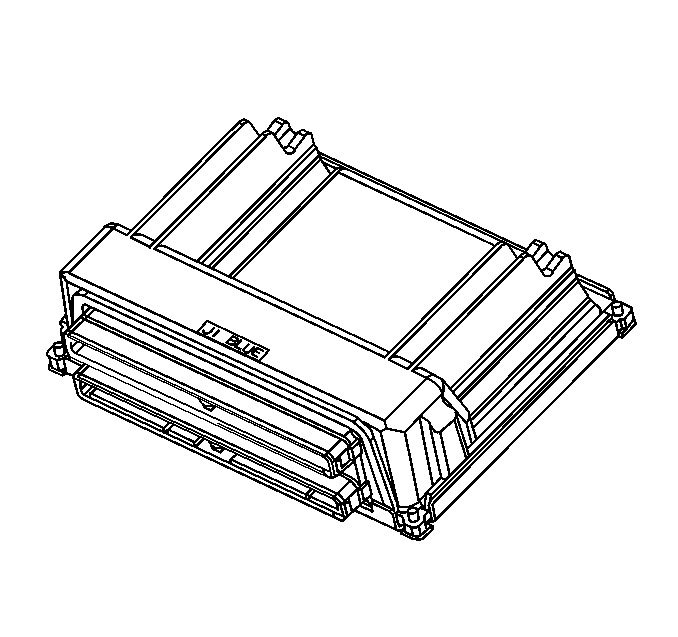
The PCM is responsible
for maintaining proper spark and fuel injection timing for all driving conditions.
To provide optimum driveability and emissions,
the PCM monitors input signals from the following
components in calculating ignition control
(IC) spark timing:
| • | Engine coolant temperature (ECT) sensor |
| • | Intake air temperature (IAT) sensor |
| • | Mass air flow (MAF) sensor |
| • | Trans range inputs from transaxle range switch |
| • | Throttle position (TP) sensor |
| • | Vehicle speed sensor (VSS) |
Modes of Operation
Ignition control (IC) spark timing is the PCMs method of controlling
spark advance and ignition dwell when the ignition system is operating
in the IC mode. There are two modes of
ignition system operation:
In Bypass mode, the Ignition system operates independently of the PCM,
with Bypass mode spark advance always at 10 (BTDC). The PCM has no control
of the ignition system when in this mode.
In fact, the PCM could be disconnected
from the vehicle and the ignition system would still fire
the spark plugs, as long as the other
ignition system components were functioning. This
would provide spark but no fuel injector pulses.
The engine will not start in this situation.
The PCM switches to IC mode, PCM controlled
spark advance, as soon as the engine begins cranking.
After the switch is made to IC mode, it will
stay in effect until one of the following
conditions occur:
| • | The engine is turned OFF. |
| • | The engine quits running. |
| • | A PCM/IC module fault, DTC P1351, P1352, P1361, or P1362
is detected. |
If a PCM/IC module fault is detected while the engine is running, the
ignition system will switch to Bypass Mode operation. The engine may quit
running, but will restart and stay in
Bypass Mode with a noticeable loss of performance.
In the IC Mode, the ignition spark timing and ignition dwell time is
fully controlled by the PCM. IC spark advance and ignition dwell is calculated
by the PCM using the following inputs:
| • | Engine speed, 24X reference or 3X reference |
| • | Crankshaft position, 24X reference or 3X reference and camshaft
position PCM input signal |
| • | Engine coolant temperature (ECT) sensor |
| • | Throttle position (TP) sensor |
| • | Knock signal, knock sensor |
| • | Park/Neutral Position (PRNDL input) |
| • | Vehicle Speed, vehicle speed sensor |
| • | PCM and ignition system supply voltage |
The following describes the PCM to Ignition Control Module circuits:
| • | 3X reference PCM input--The ignition control (IC) module
generates the 3X reference signal from the 7X CKP sensor. The IC module sends
the 3X reference signal to the PCM. The PCM uses this signal to calculate
engine RPM and crankshaft position at speeds above 1600 RPM.
If the PCM receives no pulses on this circuit,
the PCM will use the 24X reference pulses to calculate RPM and crankshaft
position. The engine will continue to run and start normally
as long as 7X CKP sensor pulses are being received, but DTC P1374
will be set. |
| • | 24X reference PCM input--The 24X CKP sensor generates the
24X reference signal to calculate engine speed and crankshaft position at
engine speeds below 1600 RPM. The 24X reference signal provides better
resolution within the calibrated RPM range. This increases idle quality
and low speed driveability. When engine speed exceeds 1600 RPM,
the PCM begins using the, 3X reference signal to control spark timing.
If the 24X reference signal is not received by the PCM while the
engine is running, a DTC P0336 will be set and 3X reference
will be used to control spark advance under 1600 RPM, and Bypass
mode will be in effect under 400 RPM. The engine will continue to
run and start normally. |
| • | Reference low PCM input--The reference low circuit establishes
a common ground between the IC module and the PCM. The wire is connected
to engine ground only through the ignition control module. The circuit
minimizes electrical ground differences between the PCM and the IC
module. The PCM uses the reference low circuit to clearly recognize
the 3X reference signals. If the circuit is open, or connected to ground
at the PCM, it may cause poor engine performance and possibly a MIL,
Service Engine Soon, with no DTC. |
| • | Knock sensor (KS) PCM input--The PCM contains integrated
Knock Sensor diagnostic circuitry. The KS system is comprised of the knock
sensor, PCM, and related wiring. The PCM monitors the knock sensor
signal to detect engine detonation. When spark knock occurs, the
PCM retards the spark timing (IC) to reduce detonation. Retarded
spark timing may also be the result of excessive engine mechanical
or transaxle noise. If a KS signal is found varying within the average
voltage a DTC P0327 may set. |
| • | Bypass signal PCM output--The IC module controls spark timing
until the PCM detects a calibrated number of 3X reference pulses, Bypass mode.
When the PCM receives these pulses, the PCM then provides 5.0 volts
to the IC module on the Bypass circuit. This signals the IC module
to transfer spark timing control the PCM, IC mode. Proper sequencing
of the 3 ignition coils, i.e. which coil to fire, is always the job
of the ignition control module. If the PCM detects a short to voltage
on the Bypass circuit DTC P1362 will set. An open in the Bypass
circuit will set DTC P1352. |
| • | Ignition control (IC) PCM output--The PCM sends out timing
pulses to the IC module on the IC circuit. When the ignition system is in
the Bypass mode, the PCM has not sent the 5.0 volt bypass signal,
the IC module grounds these pulses. When the IC mode, the PCM has
supplied the bypass signal, these pulses are sent to the IC module
to control ignition spark timing. If the IC circuit is grounded
when the engine is started, DTC P1361 will set and the ignition
system will stay in the Bypass mode. If the IC circuit becomes open
or grounded during IC mode operation, DTC P1351 or P1361 may
set. When this happens, the engine will quit running but will restart.
Upon restart following an ignition cycle, DTC P1361 will be
set, and the Ignition system will operate in Bypass mode. |








